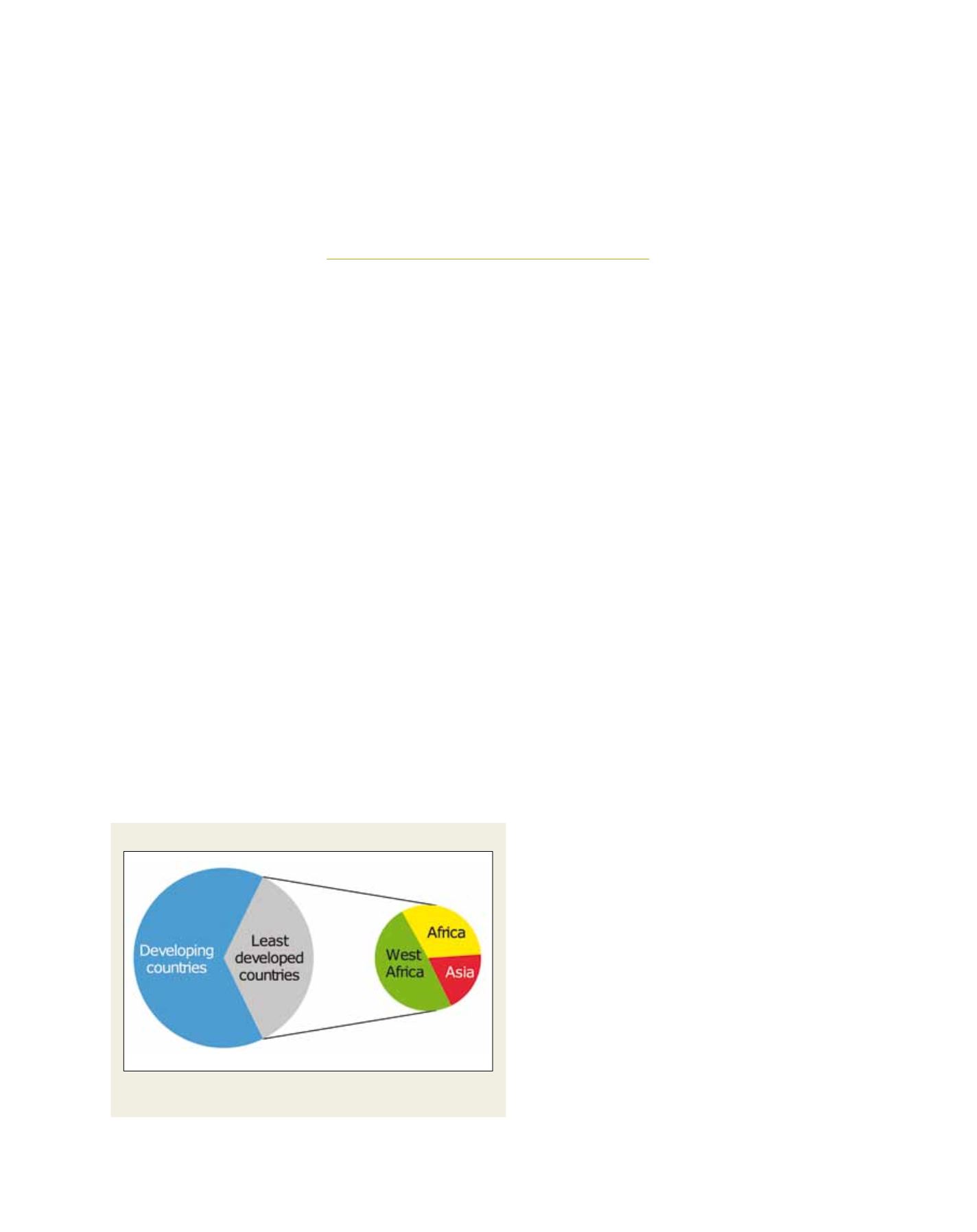

[
] 258
The Climate Change - Mitigation and
Adaptation international training programme –
a Swedish initiative
Daniel Holmstedt and Bo Holst, Swedish Meteorological and Hydrological Institute
C
limate Change - Mitigation and Adaptation is an advanced
international training programme for capacity build-
ing in developing countries, funded by the Swedish
International Development Cooperation Agency (Sida). The
overall objective is to increase, and transfer knowledge and
capacity related to climate change and its consequences.
Experiences from the programme have been very positive and
it is obvious that this type of training programme fulfils a need
for many organizations. It is also clear that it contributes to
the improvement of climate services by promoting informa-
tion exchange and dialogue between climate experts and
community planners. The programme organizer is the Swedish
Meteorological and Hydrological Institute (SMHI) along with
its partners Sweco and the Stockholm Environment Institute.
The programme is designed for individuals who have key positions
in organizations related to national, regional or local community
planning. In other words, those who are active in reform processes
of strategic importance at various levels. Participants are expected
to be well acquainted with climate change issues from an adaptation
perspective and to have a university degree in technical, natural or
social sciences. The programme aims to provide methods for the
identification of vulnerable sectors in society. Mitigation and adapta-
tion to future climate conditions and the development
of action plans are other important aspects. The inten-
tion is that the programme will contribute to capacity
building and strengthening of institutions in the partici-
pants’ home countries. Participants are recruited from:
• Ministries
• Authorities (local, regional or national)
• Environmental institutes and research organizations
• Non-governmental organizations
• Consulting firms
• Industries.
The main target group for the training programme is
decision-makers rather than, for example, staff at national
meteorological and hydrological services (NMHS) who are
already knowledgeable in climatology and climate change.
Therefore the number of participants from NMHSs
amounts only to about 10 from least developed countries
(LDCs). However, out of the total 160 participants from
LDCs, about 80 are recruited from organizations that are
immediate users of climate services from the respective
national hydrometeorological agencies and institutes.
Most of them come from governmental or regional organ-
izations in direct need of climate information for their
planning and decision-making processes. Examples are
ministries of environment, water, energy, forestry, agri-
culture and fishing, and health, as well as national disaster
management committees and specific development coun-
cils, commissions and projects are represented.
Programme outline
The programme has four main components:
• Preparation
• Training in Sweden (four weeks)
• Project work in the home country (six to eight months)
• A follow-up regional seminar.
The preparation phase includes the selection of partici-
pants by the programme organizer. This is based on a
formal application which contains a brief presentation
by the applicant, including an outline of their role in the
home country and a description of the individual project
work, which is an important part of the programme.
C
apacity
D
evelopment
Distribution of participants from the training programme
Out of the total 450 participants, 160 come from LDCs (Asia, Africa and
French speaking West Africa).
Source: Elin Sjökvist, SMHI
















